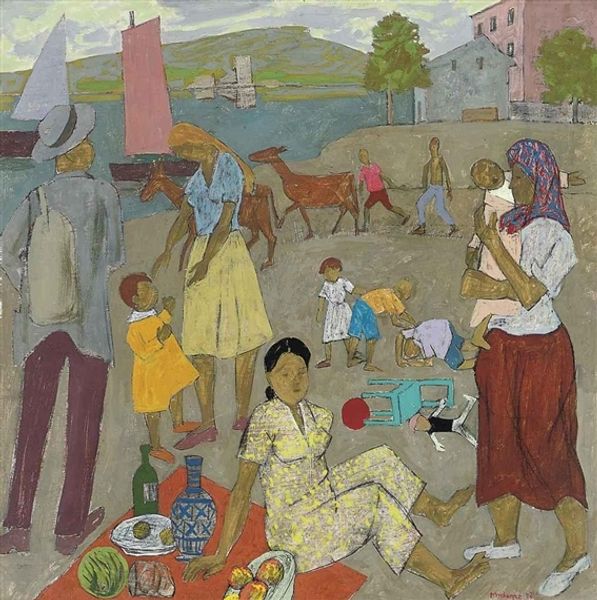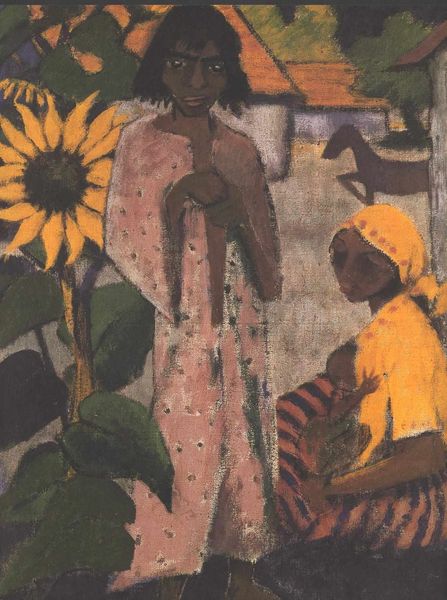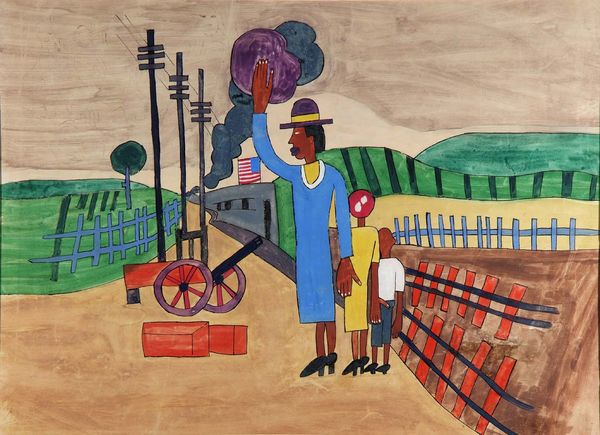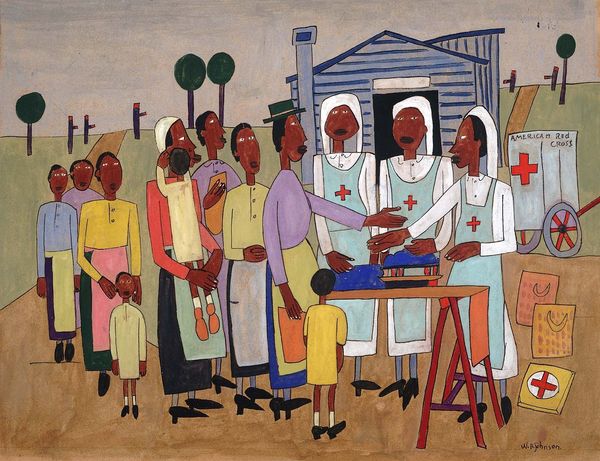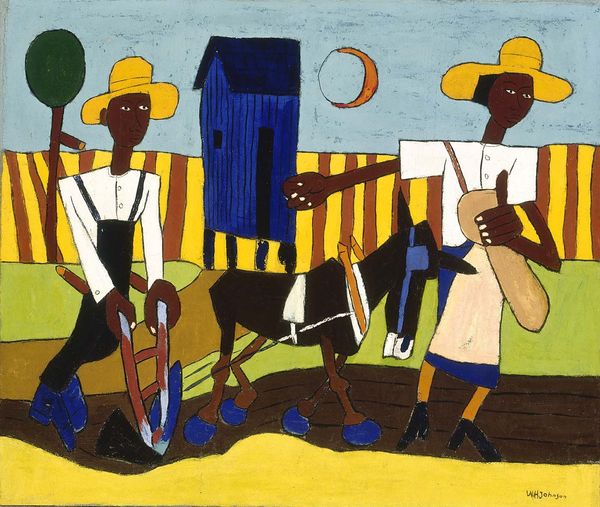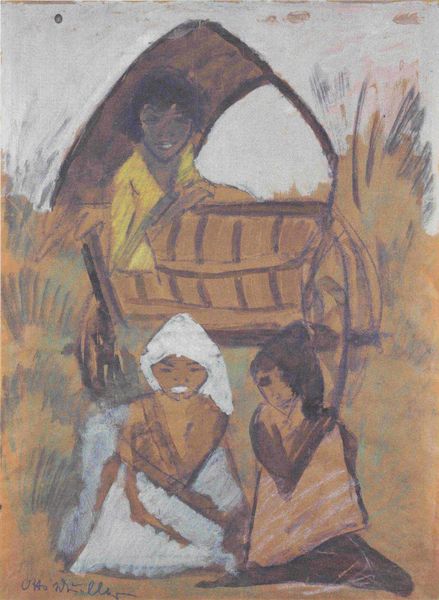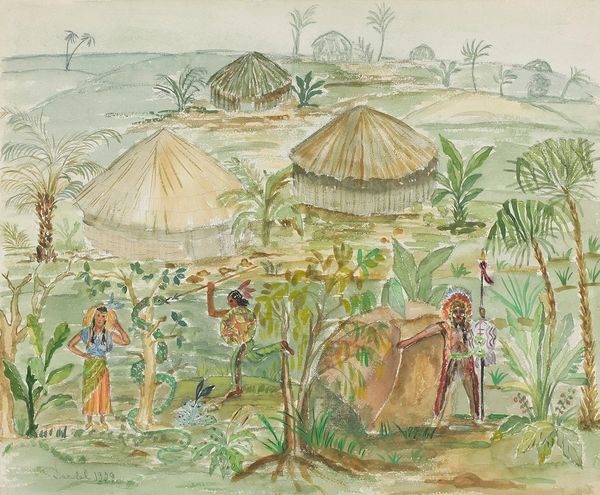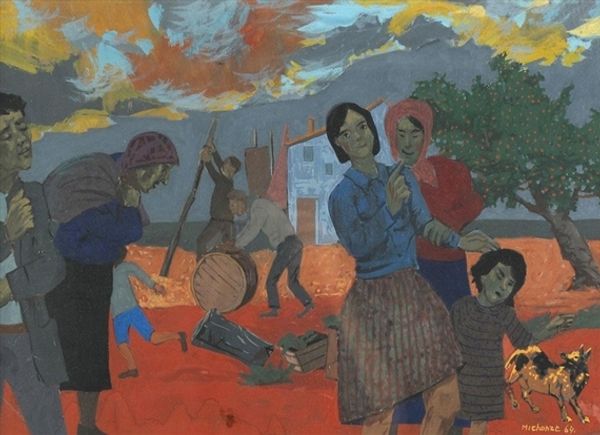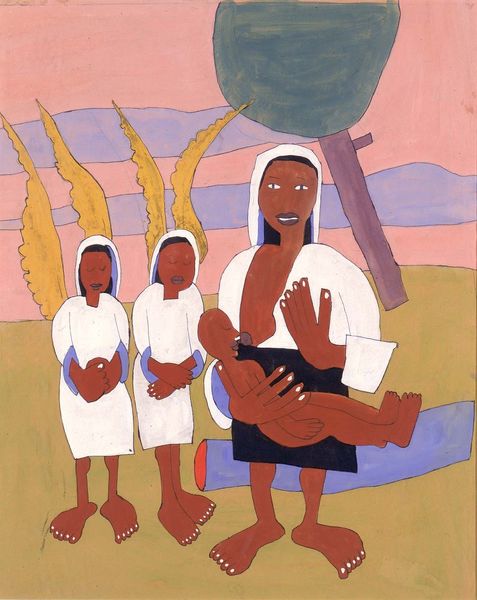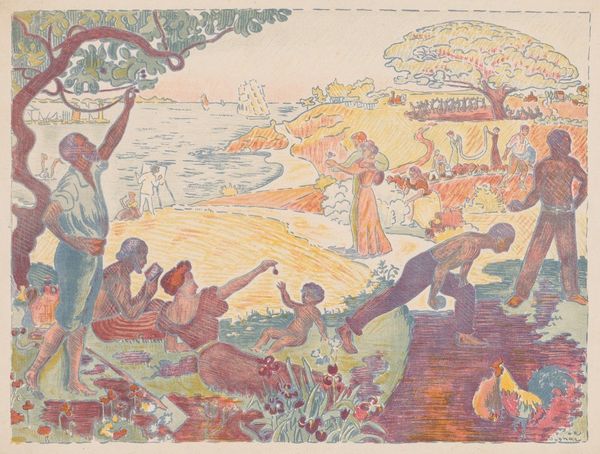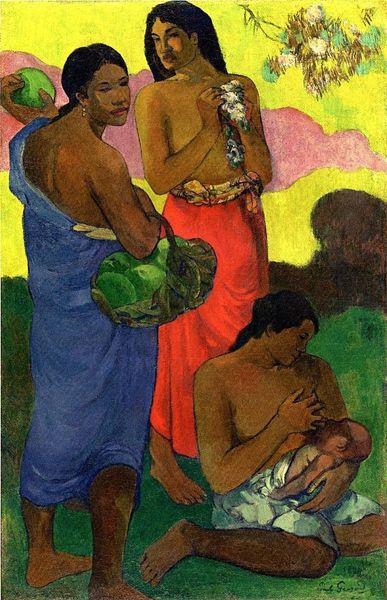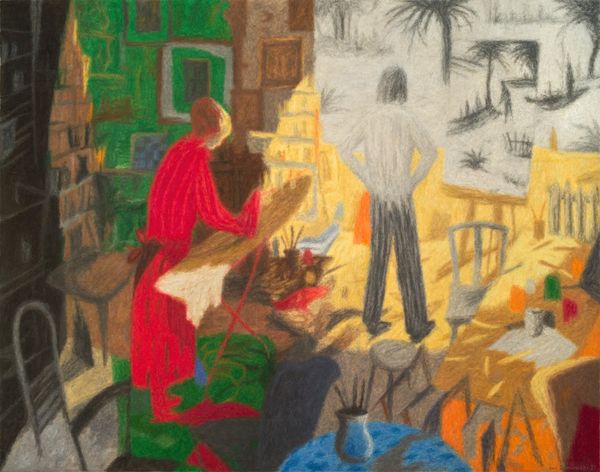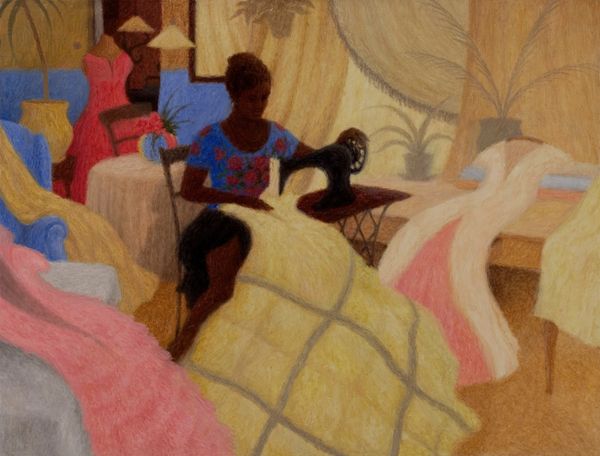
Copyright: William H. Johnson,Fair Use
Curator: This watercolor painting by William H. Johnson, titled "Cotton Pickers," dates to 1940. The scene depicts a group of African American laborers in a cotton field, under a rather unusual sky. What strikes you initially about the piece? Editor: The simplified figures, almost blocky, and the palette, especially that lavender-colored cloud, create a mood of both hard labor and, paradoxically, a serene, dreamlike quality. There's something quite arresting in the way he's combined these elements. Curator: Johnson’s distinctive style blends elements of expressionism and realism to tackle themes of identity and labor. He often focused on the experiences of African Americans. This work particularly speaks to the social realism movement, shedding light on the everyday lives of those often marginalized. How do you perceive the role of African art within his style and the social impact that is conveyed through this? Editor: Absolutely. I find that Johnson's time in Scandinavia deeply informed his practice. When viewing this piece I immediately consider its role within Black modernism, the figures presented, the landscape as a site of struggle, and the racial dynamics it brings forth into discussion. These cotton pickers, though simplified, are monumental figures, their stooped postures embodying the weight of history and hardship. I think the artwork, while appearing simple on the surface, unveils complex layers of exploitation and resilience through its composition. Curator: Considering that the cotton industry was such a key facet of social control and economic disenfranchisement during the Jim Crow era, don't you agree the imagery invokes questions of freedom and the legacy of slavery? Editor: Without question. These figures exist as both individuals and symbols of a collective experience marked by systemic injustice and labor. And those incredibly large hands and feet -- I wonder if that wasn't purposeful in symbolizing how these individuals are connected to land and labor in an indissoluble way. The image operates in a space between the personal, individual experience and the pervasive exploitation of sharecropping systems. It stands as a cultural symbol speaking on human dignity within such brutal labor circumstances. Curator: Yes, I agree, ultimately this work acts as both a historical document and a call for social change, reminding us of the long struggle for equality and justice. Editor: It's a testament to the artist's profound capacity to communicate critical sociopolitical realities through visual representations and leave the audience pondering such matters.
Comments
No comments
Be the first to comment and join the conversation on the ultimate creative platform.
